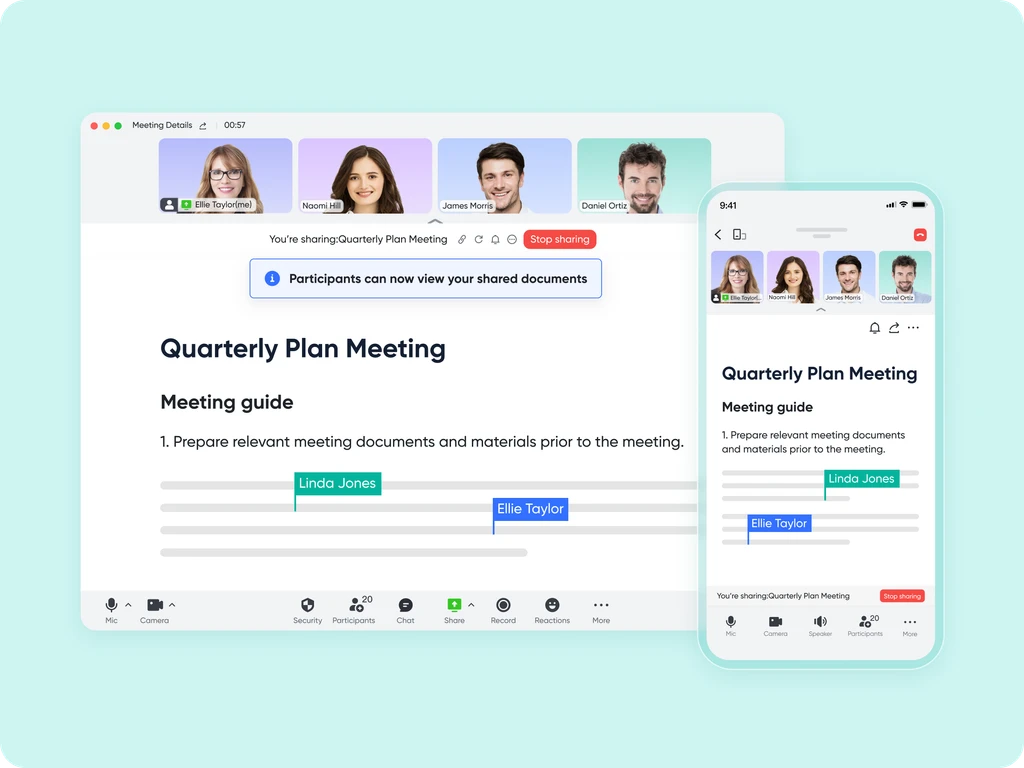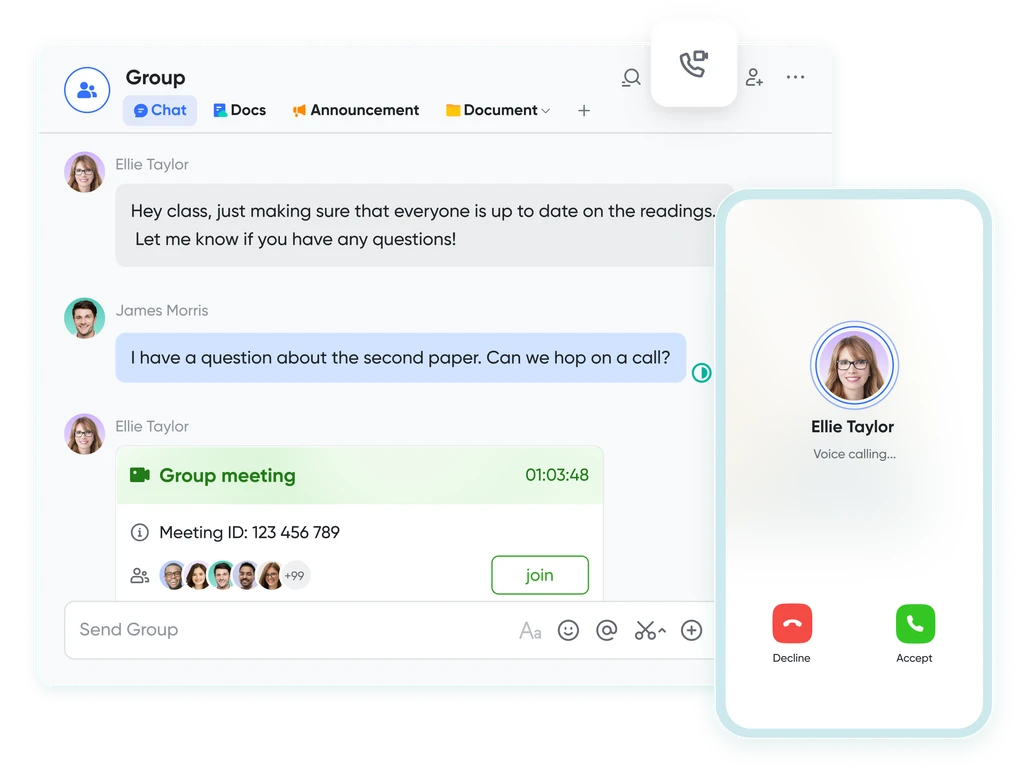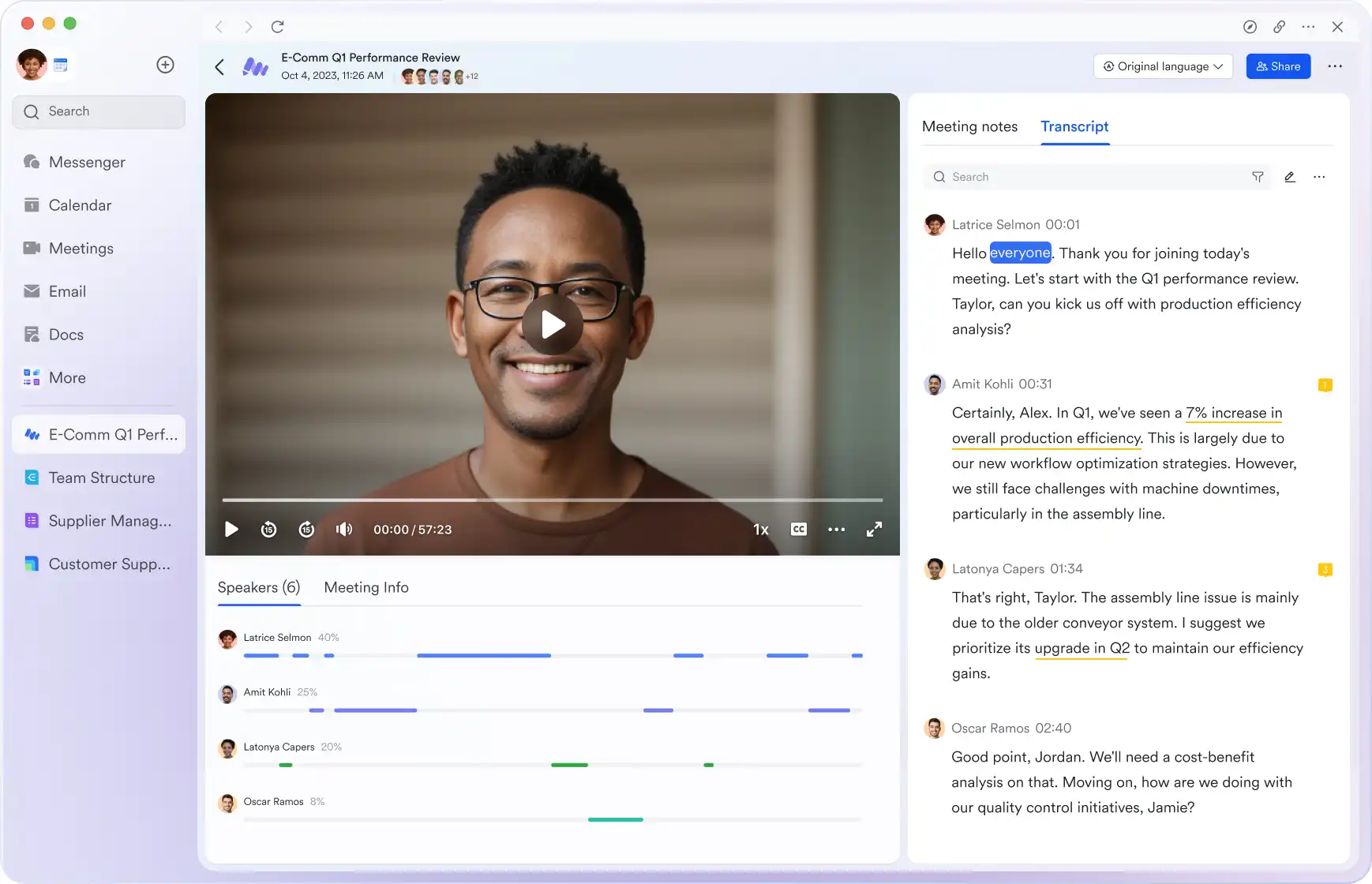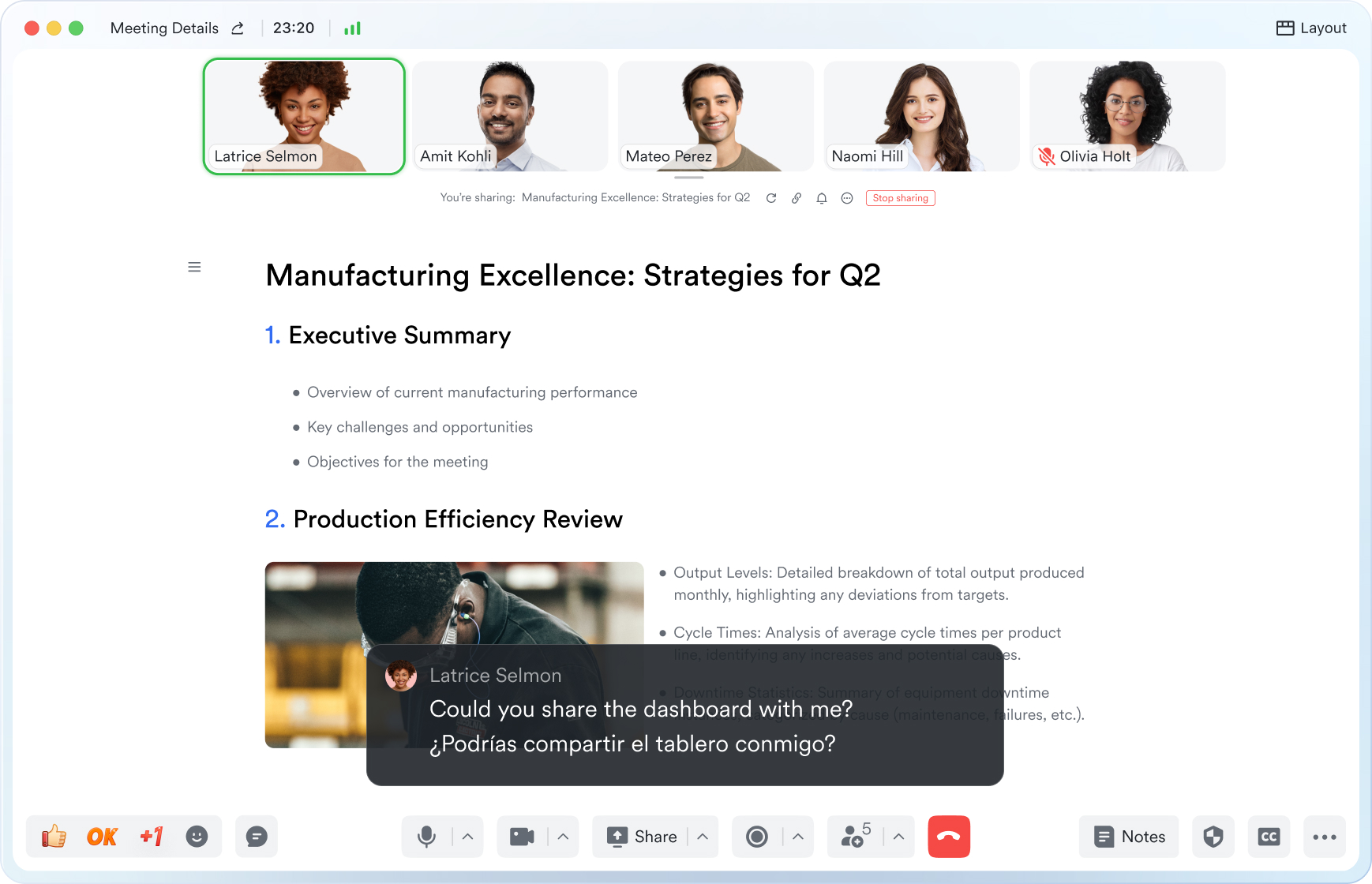Review Meeting
This guide will walk you through the essential elements of use review meeting to keep your attendees aligned and engaged.
Try Lark for Free
In the dynamic landscape of business operations, the success of review meetings has become increasingly pivotal, especially as organizations embrace the evolving trends of 2024. This article delves into the essential strategies and best practices for hosting successful review meetings, offering comprehensive insights to optimize these gatherings for maximum impact and outcome-driven decisions in the 2024 workplace environment.
Use Lark Meetings to turn meetings into true collaborative experiences.
What is a review meeting?
A review meeting serves as a structured forum where stakeholders gather to assess progress, identify challenges, and potentially re-strategize to ensure the achievement of project goals. It revolves around comprehensive discussions on ongoing activities, previous decisions, and future actions, offering a platform for strategic evaluations and collaborative problem-solving.
Goals of review meeting
The primary objectives of a review meeting include evaluating progress, identifying obstacles, fostering team collaboration, and aligning strategies with organizational objectives. These gatherings aim to drive accountability, enhance transparency, and enable informed decision-making, ultimately contributing to overall efficiency and improved performance.
Who should attend review meeting?
A successful review meeting requires the participation of key stakeholders, including project leads, department heads, relevant team members, and other decision-makers. The presence of diverse perspectives and expertise fosters a holistic evaluation and ensures well-informed discussions and decisions.
Learn more about Lark x Meetings
Topics, agenda, and structure of review meeting
The foundation of an effective review meeting lies in meticulous preparation and organization. Creating a well-defined agenda, selecting pertinent topics, and structuring the meeting to allow ample time for discussions are imperative. The agenda should outline key discussion points, ensuring that the meeting remains focused and productive.
Learn more about Lark x Meetings
How often does a review meeting occur?
The frequency of review meetings hinges on the nature of the project or process under review. For ongoing projects, more frequent review meetings may be necessary to ensure timely adjustments and updates. Conversely, long-term initiatives may require periodic review meetings to assess progress and adjust strategies.
Key differences between review meeting and another similar meeting
While review meetings share similarities with status meetings and retrospective gatherings, they are distinct in their approach and focus. Review meetings typically emphasize a comprehensive assessment and decision-making process, often delving deeper into strategic considerations and forward planning.
Related:
Unlock the Power of Webinars: A Comprehensive Guide to Boost Your Business | Lark Blog | Lark BlogLearn more about Lark x Meetings
Three practical examples of review meeting
- Project Progress Review: In this scenario, a review meeting serves to evaluate the progress of a specific project, aligning team efforts, and addressing potential roadblocks to ensure project timelines and quality standards are met.
- Product Development Review: Here, a review meeting focuses on assessing the development stages of a product, integrating feedback from different departments, and aligning the next steps to ensure a successful product launch.
- Team Performance Review: This type of review meeting centers on evaluating the overall performance of a team, recognizing achievements, addressing challenges, and devising strategies for improved collaboration and productivity.
Common pitfalls of a review meeting
Although review meetings hold immense potential, they are susceptible to several common pitfalls that can hinder their effectiveness. These may include inadequate preparation, lack of accountability, disorganized discussions, or insufficient follow-up on action items. Recognizing and addressing these pitfalls is crucial for maximizing the value of review meetings.
Learn more about Lark x Meetings
Dos and don’ts of a review meeting
| Dos | Don'ts |
|---|---|
| Clearly define meeting objectives | Avoid going off-topic |
| Encourage active participation | Disregard time management |
| Provide constructive feedback | Dominate the discussion |
| Follow up on action items | Neglect documentation of discussions |
What makes a virtual review meeting successful?
Conducting successful virtual review meetings demands particular attention to technology, engagement strategies, and communication tools. Effectively utilizing virtual collaboration platforms, establishing clear communication protocols, and ensuring active virtual participation are critical for the success of these meetings.
Related:
Master the Art of Meeting Notes with Lark for Enhanced Collaboration | Lark Blog | Lark BlogLearn more about Lark x Meetings
Typical takeaways of the review meeting
A well-executed review meeting should culminate in tangible takeaways, including decisive action items, strategic realignments, assigned responsibilities, and documented agreements. These takeaways serve as the foundation for actionable progress and sustained momentum.
Questions to ask in the review meeting
Sustaining productive discussions in review meetings requires the inclusion of thought-provoking questions, such as:
- What are the key milestones achieved since the last review?
- Are there any potential obstacles that require immediate attention?
- How can we adapt our strategies to optimize future outcomes?
Related:
Unlock the Power of Webinars: A Comprehensive Guide to Boost Your Business | Lark Blog | Lark BlogLearn more about Lark x Meetings
Conclusion
In conclusion, the successful execution of review meetings is essential for navigating the challenges and opportunities presented in the professional landscape of 2024. These gatherings not only facilitate informed decision-making but also foster collaboration, accountability, and constructive dialogue, ultimately driving organizational success.
Learn more about Lark x Meetings
Use Lark Meetings to turn meetings into true collaborative experiences.
A Game Changer for Review Meeting: Empower your team with Lark Meetings
In the fast-paced and dynamic world of modern business, effective communication and collaboration are crucial for success of Review Meeting. Here we introduce Lark Meetings to serve as a centralized hub for all communication needs.
Transform your meetings into collaborative endeavors

Leverage the potency of in-call document sharing, intelligent meeting minutes, and mobile-optimized features to enhance productivity collaboratively, irrespective of your location or schedule.
Seamlessly collaborate in real-time, across any device

Share live documents instead of just screen views. Participants can navigate and edit simultaneously within the video call window, even while on the move.
Shift your focus to engagement, not note-taking

Lark Minutes automatically converts video meetings into transcripts, facilitating easy viewing, searching, and collaborative editing. Stay in the loop asynchronously, even if you can't attend the live meeting. Lark Minutes for meeting minutes support translation into 10+ different languages.
Break language barriers in communication

Lark Meetings provide real-time translation for subtitles, allowing individuals from diverse backgrounds to express themselves in their native languages. Ensure every voice is heard, regardless of geographical location. Live subtitles currently support translations from English, Chinese, and Japanese to 10+ different languages. See more translation feature in Lark.
Connect with larger audiences
Host dynamic online meetings and events accommodating up to 1,000 participants, with the flexibility of up to 50 breakout sessions for intimate group discussions within the larger meeting context. Try more Lark features for free.








